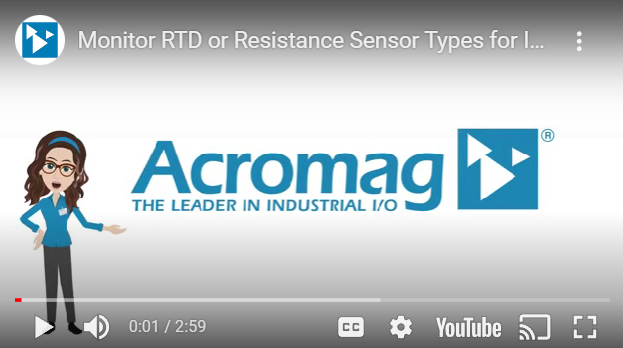Acromag have recently released a video on Monitoring RTD or resistance sensor types in industrial applications.
Firstly, this video explains the high density Ethernet I/O modules being used to monitor RTD or Resistance sensors types for Industrial applications. These modules are called NT2620 and are part of NT Series Ethernet I/O Module family.
The NT2620 feature four RTD/resistance Inputs and two bidirectional discrete digital I/O channels. This allows it to remotely measure temperature limits with conditional logic. It contains multi-protocol communication consisting of Acromag’s i2O peer to peer communication with multi cast technology.
The NT Series modules for monitoring RTD or Resistance Sensor Types consist of two parts.
Firstly, the NTE Ethernet I/O Modules provide a network interface to measure temperature levels. Whilst the NTX Expansion Modules can interface up to 16 RTD sensor inputs. Three NTX Modules can be partnered with one NTE Module. Which in total give the expandable I/O capacity up to 54 I/O channels on one IP address.
The NTE consists of dual RJ45 ports and distributes 9-32V of DC power along the DIN rail to NTX expansion modules. It is a space saving design with both the NTE and NTX modules only requiring 25mm of DIN rail per module. There is also the ability to expand locally or daisy chain remotely with 100M distance between each module.
The Webserver features Modbus TCP-IP, Ethernet IP and Profibus (coming soon) to monitor and/or control the internal I/O channels. With the modules being field selectable it provides significant savings without having to purchase of additional modules.
Finally, the NT2620 modules are ideal for harsh environments. They have hazardous location approvals, high noise immunity and operate in temperatures from -40 to 70°C. Making them ideal for monitoring temperatures in tanks, motors, heaters, chillers and in many other industrial processes.
Watch the video below to learn more or contact us for more information.
